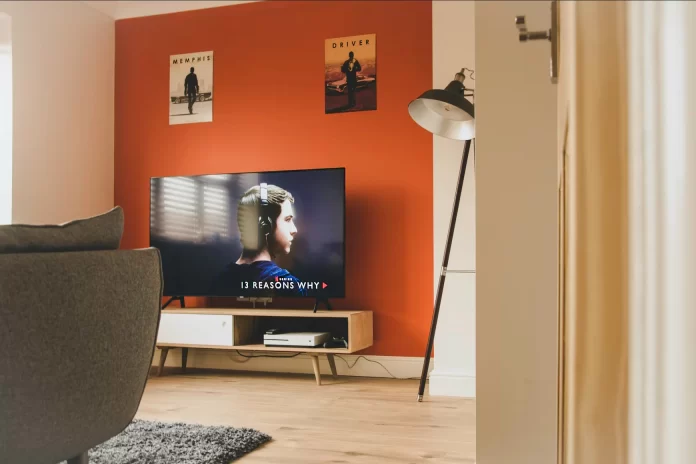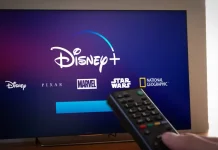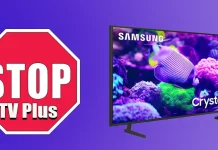Modern Hisense TVs, are equipped with many features to help you get the best experience from your video content and only make it easier to watch. For example, you can easily enable or disable subtitles, voice assistant, adjust shadows and brightness, and more to make watching comfortable for you. This is especially true for people who watch original content from different countries in a foreign language.
Sometimes there are situations where you can mix up the buttons on the remote control. The fact is that the Hisense TV remote control contains both a subtitle button and a closed caption button. And if you see that your TV shows one subtitles instead of the others you can, in principle, easily figure it out and correct the mistake. Well, let’s take a closer look at why you see closed captioning instead of subtitles on your Hisense TV.
Why do you need to use subtitles?
When a new film comes out, it’s not easy to get it translated. It’s even harder to get it dubbed in the native language, so new films are often subtitled first and only then dubbed. Although many movie lovers prefer to see films in their original language to feel the emotions and actions. Some people improve their foreign language skills because there is no better practice than listening to native speakers.
Also, subtitles are the only option for people with hearing problems. Finally, subtitles can be present as a way to duplicate television programs in the national language.
Subtitle control on most modern TVs, including Hisense TVs, is as simple as possible. Using the remote control buttons, you can change the status of the screen with a few taps. For example, you can easily turn on subtitles on your LG TV as well. However, the problem is that, firstly, many people simply don’t know about this possibility. Secondly, there’s no generally accepted standard on this issue, and each manufacturer solves the problem in its way.
Read Also:
- How to change the input source on Hisense TV without remote
- How to turn on Demo Mode or Store Mode on Hisense TV
- How to connect Hisense TV to Wi-Fi
What does closed captioning mean?
Many users think and believe that closed captioning and subtitles are the same thing, but this is far from the case. Nowadays, many streaming services support closed captioning and subtitles, so if you need to enable subtitles on Disney Plus, you can do so quite easily.
Subtitles aren’t designed to help people learn a foreign language. The main purpose of subtitles is to help people with hearing impairments. In this way, you can see not only the text that’s displayed when the audio track is broadcast, but you can also see other events and details that are happening and are displayed on the screen.
Today, many services have incorporated closed captioning into their system, allowing people with hearing difficulties to fully participate in the process. TikTok is one such service that adds automatic closed captioning.
What is the difference between subtitles and closed captioning?
Closed captioning and subtitles are used to convey sound and speech from movies, TV shows, or shows in text format. The most important thing to remember about closed captioning and subtitles is that they’re designed to help people with hearing impairments understand what’s happening at a particular moment on a TV screen.
The difference between closed captioning and subtitles can be noticed immediately because the two features give people different options. Having closed captioning ensures that people with hearing problems can fully understand what is happening on the screen during a TV show. Because you will see a description of all the details, in order to better connect with the video content, in addition to the lines of the actors and presenters.
At the moment, conventional subtitles only allow you to see the actors’ lines on the screen in text form, which have been pre-recorded or which are displayed automatically. In turn, other sounds won’t be displayed on the screen if the characters are silent. Thus, if we consider these two features as helping people with hearing problems, then closed captioning would therefore be the best to use.
How to disable CC on Hisense TV
If you want to turn off closed captioning on your Hisense TV, you have to follow these steps:
- First of all, press the “CC” button on your Hisense TV remote control.
- A new window will open.
- Finally, just click on the “OFF” button using your remote control arrow key.
Once you have completed these steps, you will be able to turn off closed captioning on your Hisense TV. Moreover, you can also watch Hulu on your Hisense TV with subtitles that you can enable in the playback menu right in the Hulu app.
Where is the CC button on the Hisense remote control located?
Hisense TVs released after December 2016 are equipped with additional accessibility features for the hearing impaired. These are mainly assistive technologies for basic TV functions, text menus, and video descriptions.
To enable closed captioning on Hisense TV, the program must support this feature. Users can enable or disable closed captioning in the “Accessibility” category in the Settings menu.
Alternatively, users can simply press the CC button on the remote control. The button is labeled “CC” and is located below the “7” key or above the Netflix button on the remote. If your remote doesn’t have such a button, you can use the “Subtitles” button located under the number “9”.
Read Also:
- How to turn on subtitles on Samsung TV
- Does Hisense TV have Bluetooth
- How to change the source on Hisense Smart TV
What is real-time captioning?
In the traditional sense, this is the process of converting audio into plain text, often known as real-time captioning. Transcribers listened to the audio recording and typed what they heard, and in many cases, this is still the case.
Closed captioning is not the same as transcription, since the latter is precisely synchronized with the audio. Transcriptions are simply a document that contains all the transcribed text. The source text is the words spoken throughout the video or audio clip, with no temporal coding.
However, technological advances have made live transcription possible. Live transcription can convert voice to text in real-time. This is very useful in situations where it is time-consuming to create proper captions.
Thus, live captioning cannot guarantee the same level of accuracy as closed captioning. The accuracy of any live transcription is usually determined by several variables, such as:
- Speech clarity
- Background noise
- Speech volume
- Accents and dialects
And as real-time captioning technology continues to evolve, accuracy gets better over time.






